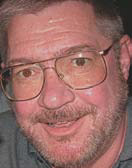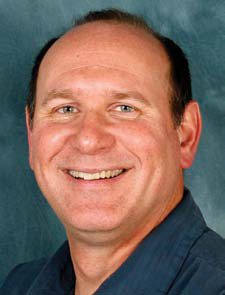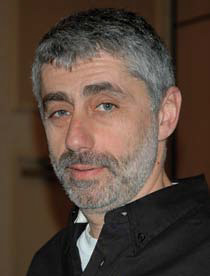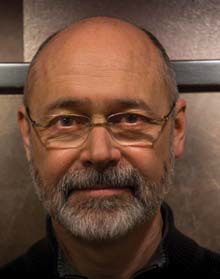State of the Edit 2014

JAY ANKENEY
LOS ANGELES—New technologies don’t limit the possibilities of post production, they expand its opportunities. This year’s annual “State of the Edit” opinion survey of NLE representatives revealed that more than ever the editor’s chair presides over the fulcrum of digital content creation.
ADOBE
Al Mooney, product manager for Premier Pro at Adobe is impressed with how quickly our craft is moving from HD to 4K post production and beyond. “Everyone and his cousin is coming out with 4K cameras, and editors are the ones who need to be able to handle their output,” Mooney said.
“We just came back from the Sundance Festival where a lot of entrants were finishing films in 4K even on amazingly modest budgets. With companies like Netflix starting to offer 4K delivery, this call for 4K post is just going to get louder, and everyone knows 4K hedges your bets against future-proofing any of today’s projects. Last year 4K was the buzz, this year 4K is the reality.”

Al Mooney, product manager for Premier Pro at AdobeAUTODESK
According to Maurice Patel, entertainment industry manager at Autodesk, the world of post production is growing so quickly that dealing with all of the different workflow environments is one of our major challenges. “More and more, editors are having to wrestle with the complex infrastructure of distribution to fit the needs of delivering projects in a burgeoning number of formats,” Patel said. “This is going to become even more complicated once high frame-rate production and high dynamic range video moves toward some form of standardization. Just dealing with HFR timecode by itself through the whole post production workflow will require a lot of inventive creativity.”
AVID
With competition from both professional- and amateur-generated content vying for viewers’ attention, Doug Hansel, senior segment and product marketing manager, pro video at Avid, told me editors are going to inevitably have to rely on expanded computing power to handle the load. “The metadata that is generated throughout the post production chain can only be kept track of with the help of greater data wrangling capabilities,” Hansel said. “Facing huge source loads and expanded access to stored archives, just finding where things are is going to require giving editors collaborative search engines that can work with some form of standard metadata generated in a consistent fashion across every manufacturer’s individual platforms. Our skills may be specialized, but we can’t be penalized by proprietary metadata.”
Doug Hansel, senior segment and product marketing manager, pro video at Avid EDITSHARE
With post production firmly file-based these days, Andy Liebman, founder and CEO of EditShare, sees a looming need for quality control over the delivery process.
The professional video industry's #1 source for news, trends and product and tech information. Sign up below.

“With files it’s really not ‘what you see is what you get’ like it was with recordings on tape,” Liebman said. “Digital file rendering is fraught with uncertainties and it is awfully easy to get it wrong, so making that process foolproof is going to be one of the goals editors need to address. Just as an example, the inclusion of closed captioning in a file can be daunting. You may have ingested the captions over HD-SDI to your timeline, but enclosing that information into a file is different for each system. Or, making sure that the various versions of multi-track audio are properly reproduced to the audience’s ears is not an obvious process. Different applications have their own requirements for rendering a file that will be able to play back as expected, wherever it is expected.”
GRASS VALLEY
Editors facilitating live broadcasts through post- production technology are part of the vision of Ed Casaccia, senior director of segment marketing at Grass Valley. “In a real time shoot, multiple angles are regularly captured by a replay system, and editors need to be able to work with the markers the recording specialists inserted into each of the iso takes,” Casaccia said.

Andy Liebman, founder and CEO of EditShare Casaccia cited the example of a major sports event. “The replay system is capturing all angles of a given competition, and some of them may go out directly live to air,” he said. “But it’s the editor who later needs to create packages to roll into a subsequent broadcast segment by accessing the essential highlights of every action from shared storage and cutting them together under the pressure of on-air schedules. That means all of the angles have to be seen as linked assets in a content management system so the editor has the option of presenting every key moment from all available perspectives. Metadata is crucial for this, but it only matters if the editor can understand the source footage in the context of the original occurrence.”

Boris Yamnitsky, CEO and president of BorisFXBORISFX
The wide variety of acquisition sources translates into new horizons for editors to conquer, according to Boris Yamnitsky, CEO and president of BorisFX, and this relates especially to the innovative viewing angles and myriad lens perspectives seen in today’s productions.
“Our large-format, high-res cameras reveal every visual defect in a scene and while earlier approaches could bury flaws in a given take under lower resolutions, these days we cannot let such blemishes go unnoticed,” he said. “Tools like noise reduction, color filters, flicker removal and the ability to correct for keystoned lens effects give editors a wider arsenal of improvement possibilities than before. We can even re-warp a recorded image to remove the perspective bending of a fish eye lens. Simply put, the more data you capture the more problems it can cause, but editors know that viewers expect either the most pristine of images, or the creative application of an intentionally applied distortion.”
Michael Bryant, director of marketing for Sony Creative Software SONY CREATIVE SOFTWARE
Our whole concept of archiving source material has to be updated according to Michael Bryant, director of marketing for Sony Creative Software. In simpler days we would shoot a tape, edit from its recorded media, and put it on the shelf for storage. But that’s not cost-effective using the easily reformatted magnetic cards or optical disks that that have replaced those linear recordings

“With the nonstop shooting made possible by digital acquisition it means we have exponentially amplified the amount of material generated by each production,” Bryant said. “Wouldn’t it be useful if your NLE itself could burn that material to more permanent hard drive storage or inexpensive Bluray disc, thereby letting you recycle those source cards more economically? This internal archiving process could include all stills, graphics, music and other audio elements— along with the project file itself—for future use. Long-term storage technology is getting cheaper every day, so our NLE software should internally facilitate using it to create a more efficient archiving process.”
Jay Ankeney is a freelance editor and post-production consultant based in Los Angeles. Write to him atjayankeney@mac.com.
